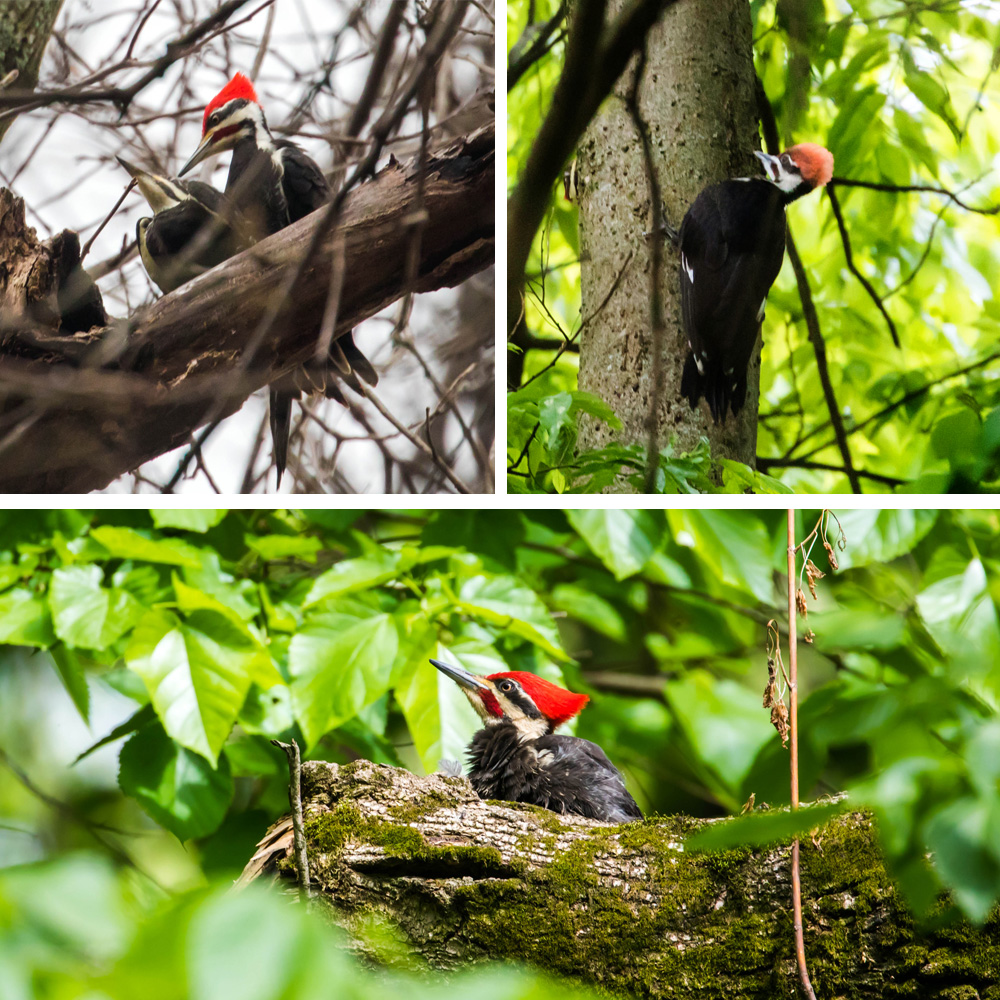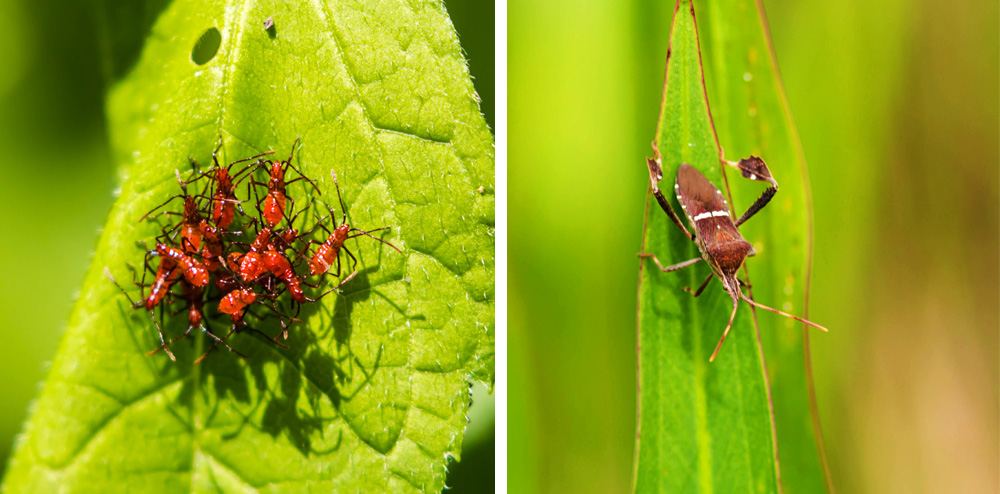NatureZen: The Next Generation
NatureZen: The Next Generation
words and photos by Melissa McMasters
At some point every spring, the soundtrack of the woods changes. There are fewer birds layering their songs over each other in pursuit of attracting a mate or warning away a rival. Filling in these gaps are pockets of chatter–high-pitched whines or chirps emanating from deep within the leaves or the trunks of trees. It’s the signal that the forest is full of new life.
One of the first signs that the latest generation of birds has arrived is the quiet but insistent pip call of a nest full of downy woodpeckers. Once you’ve tuned in to this specific sound, you’ll start noticing the dead trees in your vicinity. Check the trunks for holes barely an inch in diameter, and you may see a parent fly in to drop off food. Inside the trees, the nest cavities are 6 to 12 inches deep and lined with chips of wood. These cozy dens house the young birds for up to three weeks after they hatch.

Downy woodpeckers are so widespread in the Old Forest that I come across at least one nest almost every spring and watch it until the babies fledge. This year, I had the special experience of watching a brand-new pileated woodpecker learning to forage with his parents. Actually, it’s possible I even saw this bird being conceived! Pileated woodpecker pairs have been shown to hold territories of 130-400 acres; because the Old Forest is 126 acres, it’s unlikely that we have more than a few of these striking birds living there at one time. So it’s not out of the question that the duo I saw mating in February were the same birds I watched in April, teaching their fluffy-capped child to climb trees and tap in search of food. Over the next few weeks, I watched his crest grow scarlet and stood transfixed as he took a break from hunting to bask in the sun. I am very invested in his success!
Just yesterday I finally saw our duo of fledgling barred owls, but they were too deep off-trail for me to get a good photo. I certainly enjoyed tracking them by their peculiar hissing calls, though! Listen for something that sounds like a loud, sharp intake of breath and you may just see one! Barred owls start setting up their nests in January or February, and then the eggs (usually 2 or 3) incubate for about a month. During this time, the adult male can be pretty visible during the day as he hunts for food to bring back to the female on the nest. After they hatch, it will take about six weeks for the young owls to fly. They certainly don’t stop begging after reaching that milestone, though!

Of course, birds aren’t the only creatures bringing forth new life in the woods this time of year. (Birds do it, beetles do it, after all.) At any given time, you might see adult Asian lady beetles demonstrating the pronounced color variation between individuals, while also running into the larvae (which are still black and orange, but with much more black), or the pupa, which is beginning to resemble the adult. The larvae are always on the move and feeding, while the pupae remain motionless on a leaf until making their final transformation after a week or two.
Have you come across a cluster of small red bugs on the underside of a leaf? You might have been looking at the nymph stage of the Eastern leaf-footed bug. These stink bug relatives are unwelcome guests in gardens and agricultural fields, because both larvae and adults use their piercing mouthparts to suck the juices from plants, damaging them.
Our early spring, followed by a return of winter, made this an odd season for butterflies. Many of the familiar species were seen in much lower numbers than usual, but it was a banner year for zebra swallowtails. We got to see almost the whole life cycle unfolding: mating pairs, a female laying her egg under the leaf of a pawpaw tree, the beautiful green egg that’s smaller than a teardrop, the wee black caterpillar clinging to the underside of a leaf. Pawpaw leaves are the only thing a zebra swallowtail caterpillar eats, so the adults will only lay eggs on these trees. This makes the Old Forest–whose most numerous tree species is the pawpaw–a perfect place to observe these gorgeous butterflies. The second brood of the summer has just emerged over the past week, so keep an eye out as you walk in the woods!
It wouldn’t be an Old Forest baby roll call without some Eastern gray squirrels. One day on the main loop, I looked up and saw a small face peering out of a huge tree, and then noticed two siblings sitting motionless to the left of the cavity. A quick scan down the tree revealed some very agitated parents, who did not appreciate my presence despite the babies being 15 feet off the ground. I gave them their space, but I had to laugh a few days later when I watched one of the parents having a snack while being hounded by one of the kids looking over their shoulder. Never a moment’s peace!
Sometimes I don’t get to see the babies themselves, but I know they’re on the way! A little further afield at Meeman-Shelby Forest State Park, I ran into a common raccoon who was exhibiting odd behavior. She kept lying down in the road, not too far from humans. I stayed back and gave her plenty of room (as one should always do with a too-friendly raccoon!), but when I got home I noticed that she was almost certainly about to have kits. The next week, I saw her provisioning her den, and when she noticed me she picked something up in her mouth (a kit?) and scurried undercover. I have yet to get a good view of the kits, but she has become a regular fixture of my Meeman visits.
It was while checking on the raccoon that I saw one last instance of an animal creating her nest: this pond slider was using her shell, tail, and back feet to dig out a hole, into which she’ll drop her eggs. Turtles lay several clutches of eggs during a year, but the sex of the turtles is determined by the temperature. If it’s less than 80 degrees outside when the eggs are incubating, the turtles will generally be born male, and if it’s over 86 degrees, they’ll generally be born female. (You can read more about the research that revealed this here.)
What sort of new life have you encountered during your walks in the woods this spring?










